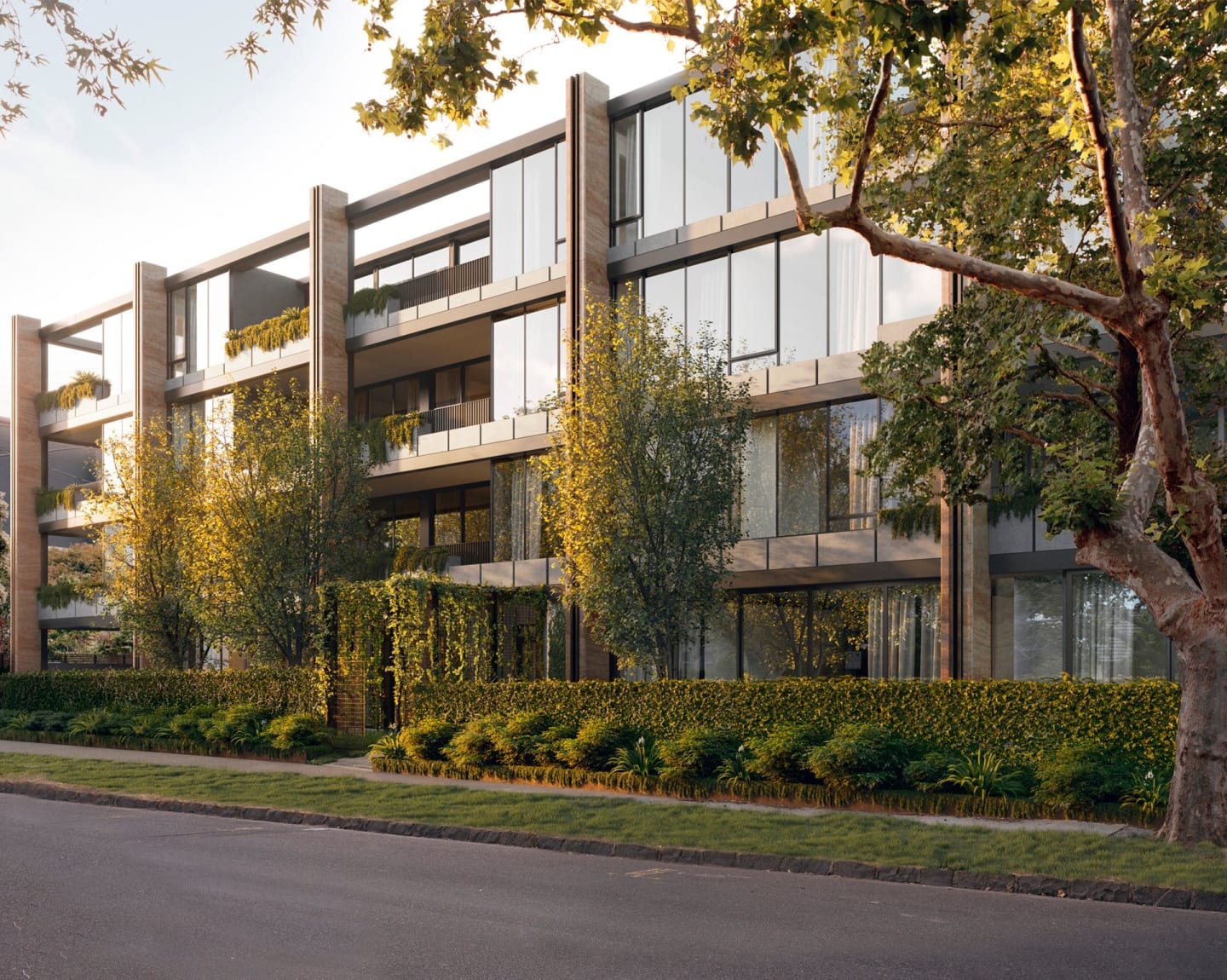Eckersley Garden Architecture shares inspiration behind the design of Hurstmon's garden areas
The latest development transforming Melbourne’s south-eastern suburb of MALVERN EAST is Landream’s Hurstmon.
Boasting 39 residences in two and three-bedroom configurations, Hurstmon forms an eye-catching landmark while complementing the rich history of the suburb.
Designed by Telha Clarke, the project has a “hidden-gem quality” that extends into each residence and its layered textures, according to architect Tim Clarke.
One of the highlights of the project is the beautiful gardens and landscaping curated by Eckersley Garden Architecture (E-GA).
Urban recently sat down with E-GA’s Scott Leung and Eleanor Cook to discuss the luxury development.
MK: How many multi-residential projects have Eckersley Garden Architecture been contracted on within Victoria?
SL+EC: E-GA are currently contracted to 28 mutli-resi developments around the inner suburbs of Melbourne, including South Yarra, Malvern, MALVERN EAST, Hawthorn, Kew and Toorak.
MK: What spoke to you about Hurstmon in particular?
SL+EC: Locality in a very leafy suburb of Malvern and the proximity to the parklands
MK: What was the design brief for the project's landscaping?
SL+EC: Malvern is very well known for its green gardens, so the brief was one of symbiosis with the architecture and the neighbourhood. Keep it purely gardenesque, understated and relaxing.
MK: Where did you take your inspiration from?
SL+EC: Inspiration definitely comes from nature, so we do our best to represent nature in the gardens we design translated to an urban context for this project.
MK: How did you synthesise the development with the existing landscaping and greenery in the surrounding streets of MALVERN EAST?
SL+EC: The key to making a project feel as though it was always part of the street fabric is to take note of the neighbourhood plant species. This way you can see what works as well as introduce some of these plants or similar species into the new landscape and stitching the street together.
Nothing better than borrowed landscape to enhance a garden.
MK: What was the biggest challenge during the design process?
SL+EC: As always there is a variety challenges with multi-residential projects however the one that stands out is the working of plant species across many levels and aspects.
At least it enables greater plant selection and diversity which is a big plus.
MK: How important is the choice of plants in a project such as this?
SL+EC: Plant selection is a majority priority for the success of the garden. Aspect will determine choice to ensure the plants longevity and tolerances. Nothing more fulfilling than seeing a garden thrive in all conditions
MK: What have you tried to do in the design that the average homebuyer may not notice straight away?
SL+EC: Planting combinations in a garden may seems natural but it takes a lot of knowledge on how a plant develops over time as well as how the layers form.
If this is done correctly a new owner can enjoy the experience the growth of the garden, even take ownership, much like a new developing child throughout the seasons.
